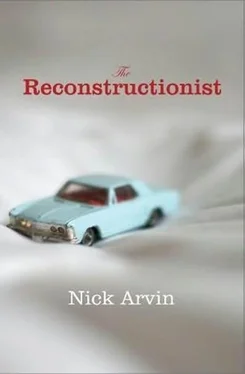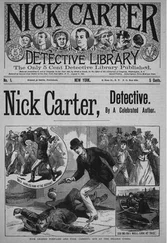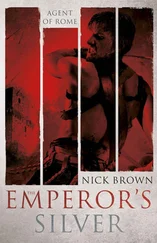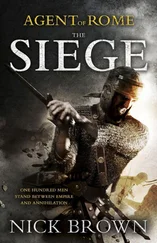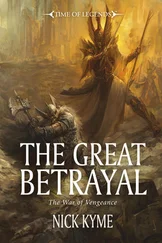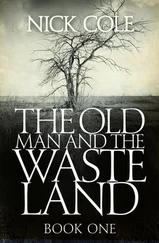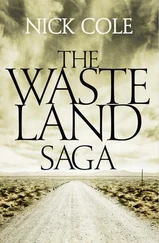Ellis waited. When he moved his foot a board creaked and it sounded explosive. He felt sad and heavy and weary and impatient and indifferent – he had heard from his father a number of similar stories with the same conclusion, and nothing ever came of it, no change of temperament or behaviour. The most surprising part of this one was that his father had managed to find a girlfriend, if only briefly. In the kitchen the compressor in the refrigerator kicked on and whirred. His father finished his beer, stared at him for a full minute, then stood and led him outside and around the house to the shed where he turned a key in the lock and slid the door aside. It moved with a sound of corroded steel bearings and revealed a space filled high and wall to wall with dusty and haphazardly stacked objects, many of them familiar – the brass coat rack, the child-sized desk, the crate of board games, the lamp made out of driftwood, the iron headboard, the steamer trunk painted green. His father heaved out two full garbage bags and revealed the hood of the airlane , standing at the centre of the clutter like an icon in a shrine.
The two of them stepped over a box of slot-car tracks and squeezed past a cupboard that Ellis recognised from the old kitchen. Leaning into the trunk of the airlane , his father grunting through his nose, they pushed it into the daylight. The damaged chassis caused it to move on an arc to the right, so that when they stopped it pointed toward the toilet standing at the verge of the open fields, and Ellis realised that the toilet, too, he knew. ‘You took the toilet.’
‘The bank got the house,’ his father said, ‘so I took out everything. Took the hot-water tank. Would have taken the furnace, but it wouldn’t fit through the doorway, and I didn’t have time to rip out the door frame.’
‘You have our old hot-water tank?’
‘Started leaking a while back. It’s in the shed there somewhere. Might be useful some day.’
‘How?’
‘Could need a part out of it.’
‘Why is the toilet out there?’
‘Weather won’t hurt a toilet. Ceramic. Washes right off.’
‘You’ve lost your mind,’ Ellis said, and his father smiled.
Dust on the car’s upper surfaces had been disturbed here and there by the brushing and pressing of hands – presumably from Boggs’s visit. Wires spilled from the broken headlamp openings. The wheels were overtaken by rust, and the tyres were flat and cracked. Looking at the damage across the front he could see already that the estimate of the angle of impact that he had used in the PC-Crash simulation had been off by a few degrees, although it seemed unlikely to make much difference. The airlane nameplate was missing from the left front fender.
He retrieved a pen, notepad and three disposable cameras from the minivan, and he borrowed an old, worn retractable tape measure from his father; he could not recall if it was the same tape measure that they had had when he was a boy. He would have preferred to have several tape measures to provide measurements relative to one another, but his father only had the one. He found just inside the shed door a sack of wooden golf tees – he’d never known his father to play golf, but he didn’t ask – and used them to mark points in the grass around the car and measured straight lines between them.
He followed the same protocol that he and Boggs had developed over the years. He checked and noted vehicle make, model, year, ID number, wheel and tyre sizes, transmission type, brake type, overall width, overall height, overall length, axle positions, tyre conditions, brake-pad wear. At every six inches across the front end he measured depth of crush relative to the rear axle position, first at bumper level, and then again at hood line. The air was ripe with humidity, and as he made notes sweat fell on the page and glistened there in wet blisters. His father stood watching, then went to the toilet and sat facing the open fields, elbows hitched up a little as if he might giddy-up the commode into the distance.
Ellis stood fussing with one of the cameras until he realised that he was hesitating, unsure he wanted photos of this car. He circled, taking photos from each side and each corner, from low and high, then moved in and snapped close-ups of the wheels, licence plates, vehicle ID number, the place where the airlane nameplate should have been, broken headlamps and windows, then focused on the damaged area at the front and took photo after photo at every angle, nearer and further, with and without measuring tape for scale. A gust of wind ruffled his notes and made the trees along the road silvery and flickering. The clouds on the western horizon were closing in, black, rigged with claws of vapour. He tried the driver’s door but it would not budge, so he opened the passenger door and slid over to the driver’s side – he had to cram himself, thighs nudging the steering wheel, knees into the dash. He sat gripping the steering wheel. Then he took up his pad and noted the mileage, the fuel level and that the gear shift was in neutral. The dash appeared largely undamaged, though now riven with age cracks. He twisted himself down under the steering wheel to look at the foot pedals – wear of use looked normal. Remembering the headlamp bulbs, and wondering if they were on at the time of the collision, he climbed out but couldn’t find either of them. They might have been lost in the collision, or put into police storage somewhere, or possibly Boggs had taken them. He drew out the driver’s seat belt and examined its length and found a transfer marking where the belt had locked and pulled a little plastic off the D-ring during the impact. He took a photo of it, leaned across the front seat and pulled out the passenger belt, and it also bore a transfer mark.
A transfer mark on the passenger-side belt.
Ellis stared at it for a long while, then let the belt run back on its retractor and stood out of the car. His hands had picked up a layer of grime from the car, and he saw it in great detail – the grey thickest on the pads of his fingers, thinner down through the joints and onto the palm.
A transfer mark on the passenger-side belt.
He crawled in again, pulled out the passenger belt and examined the mark and then looked away and then re-examined the mark: a small black line across the width of the webbing, almost as if drawn there with a crayon. But it matched the colour of the D-ring, and when he pulled the belt away from the D-ring the impress of the belt into the plastic could be seen there. He photographed both – transfer mark, D-ring.
‘Got to put the car back before the rain,’ his father said behind him.
‘A minute.’
Sometimes load markings could also be found on the belt latch plate, but here he could not see one on the driver’s side, and on the passenger side he could only see a very faint marking that might have been a manufacturing effect. Inconclusive. He crawled into the back seat, which had only lap belts – no D-rings, and therefore no possibility of transfer marks. He checked the latch plates, but there were no indications of loading. He returned to the front passenger-side belt and looked at the transfer mark there one more time, felt its texture, turned it in the light. He let the retractor take the belt back. He stood out of the car. ‘Dad,’ he said.
Side by side they put hands on the damaged sheet metal and leaning and straining they rolled the car back. His father slid the shed door shut and set the lock, then started toward the toilet. He said, without looking around, ‘I’m sorry that your friend is dead. I liked him.’
‘I’m going to get going.’
‘Find what you wanted?’
Ellis didn’t answer. His father turned to look. ‘I need to think,’ Ellis said.
Читать дальше
